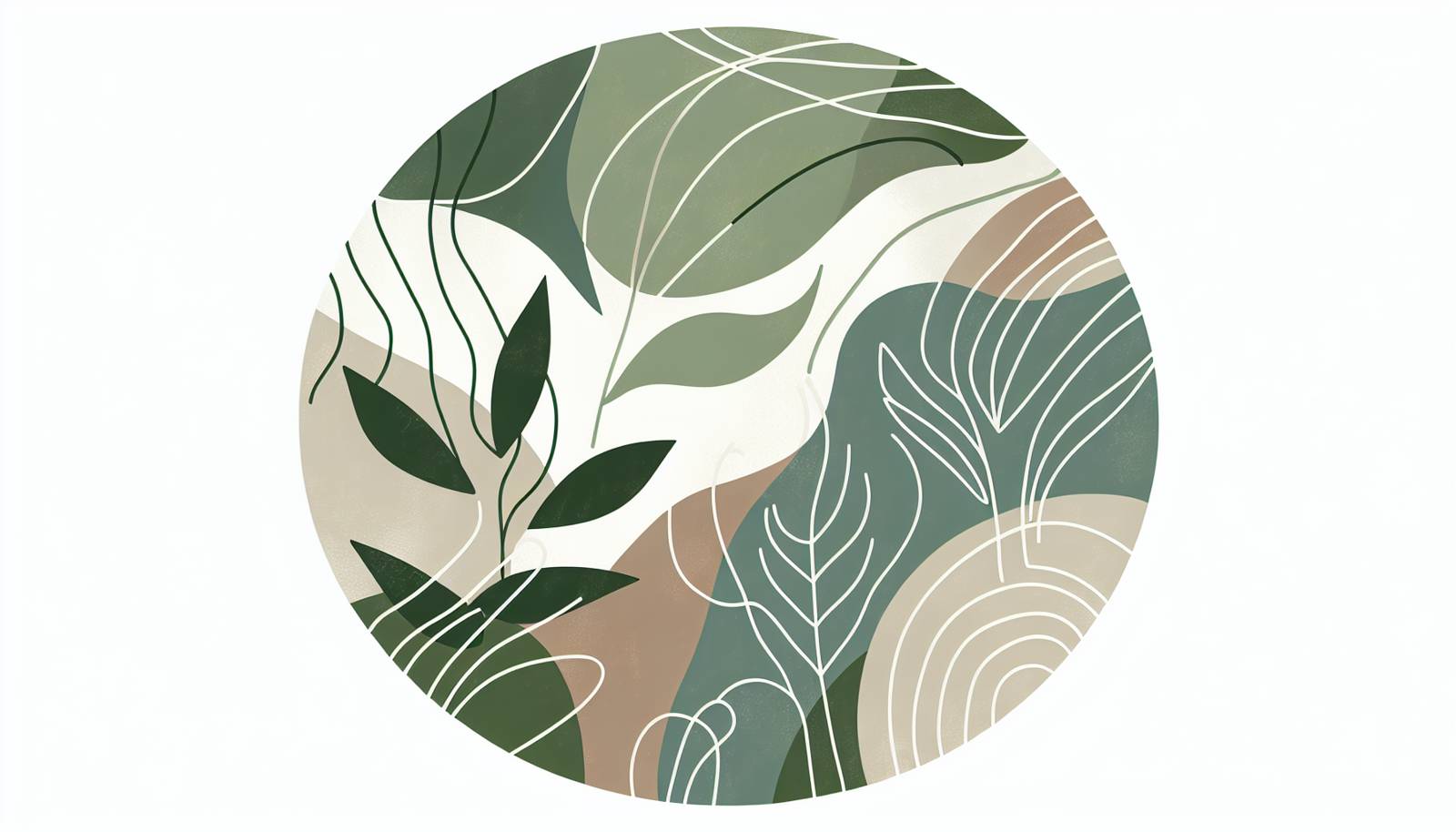
FAQ About Indoor Plant Minimalist Design Principles

What are the principles of minimalist design when incorporating indoor plants?
Minimalist design principles emphasize simplicity, clean lines, and a focus on functionality, often with a neutral color palette. When incorporating indoor plants, the key is to maintain this simplicity while adding natural elements. This involves selecting plants with simple shapes, and either monochromatic foliage or those that complement the existing color scheme. It’s important to limit the number of plants and ensure they are suitably sized for their containers and spaces to avoid clutter.

Which indoor plants are best for a minimalist home?
Some of the best indoor plants for a minimalist home include succulents, snake plants, and pothos. These plants have simple structures and require minimal maintenance, making them ideal for minimalist environments. Additionally, they contribute to the aesthetic with their striking forms and often rich green color that pairs well with a minimalist design.

How can I maintain a minimalist aesthetic with large indoor plants?
To maintain a minimalist aesthetic with large indoor plants, choose those with simple and elegant forms, such as fiddle leaf figs or rubber plants. Position them strategically as statement pieces without overwhelming the space. It's important to use minimalistic pots that match the rest of the decor and keep the surroundings uncluttered to emphasize the plant's structure.

What role do plant pots play in minimalist design?
In minimalist design, plant pots play a crucial role by complementing the sleek, uncluttered look of the space. Opt for pots with simple lines and neutral colors or textures to harmonize with the minimalist aesthetic. The pot should be as much a part of the decoration as the plant itself, enhancing the plant's natural beauty without distracting from it.

How do indoor plants contribute to the ambiance of a minimalist home?
Indoor plants enhance the ambiance of a minimalist home by bringing in elements of nature, providing color and life without overwhelming simplicity. They promote a sense of tranquility and relaxation, improving both the aesthetic and the air quality. Their organic forms contrast with the clean lines of minimalist design, adding visual interest through subtle texture and movement.

Is it possible to have too many plants in a minimalist design?
Yes, it is possible to have too many plants in a minimalist design. The key to minimalist design is simplicity and space; too many plants can lead to clutter, which conflicts with these principles. Balance is crucial - each plant should serve a purpose, whether it’s a focal point or a natural complement to the environment, without overwhelming the space.

What is the importance of natural light for indoor plants in minimalist spaces?
Natural light is essential for indoor plants as it influences their health and growth. In minimalist spaces, the careful positioning of plants to capture available natural light can enhance the open and airy feel of the design. Selecting plants suited to the light conditions of your home ensures they thrive and continue to contribute positively to the aesthetic.

Can artificial plants be used in a minimalist design?
Artificial plants can be used in a minimalist design, especially in areas where natural light is insufficient for live plants. They provide a consistent aesthetic without the need for maintenance. However, it's vital to choose high-quality replicas to ensure they mimic natural plants effectively and blend well with the minimalist style.

How do you decide on the placement of plants in a minimalist home?
When deciding on plant placement in a minimalist home, consider both aesthetic and practical aspects. Plants should complement the design elements and not obstruct pathways or views. Placement should enhance natural light access, emphasizing architectural lines and focal points without creating clutter. The goal is to integrate the plants meaningfully within the space.

What are some common mistakes when incorporating plants into minimalist designs?
Common mistakes include over-cluttering with too many plants, choosing plants that require complex care, or using pots and decor that clash with minimalist aesthetics. It's important to select plants that require minimal maintenance and to ensure that all elements, from the plant to its container, align with the minimalist principles of simplicity and harmony.

How do plant colors influence minimalist design?
Plant colors can significantly affect the mood and perception of space in a minimalist design. Green is often used to add warmth and vibrancy without overwhelming simplicity. Choosing plants with subtle variations or monochromatic foliage helps maintain visual calm. The right plant colors can enhance the minimalist aesthetic by providing a gentle contrast to neutral palettes.

What are the benefits of using vertical space for plants in minimalist homes?
Utilizing vertical space for plants can maintain a minimalist aesthetic by keeping floors clear and emphasizing open space. Wall-mounted planters or hanging plants draw the eye upwards, adding height to a room. This method uses space efficiently and can make indoor greenery a prominent part of the design without disrupting the minimalist flow.

How can I incorporate seasonal plants into my minimalist design?
Incorporating seasonal plants into a minimalist design can refresh a space and reflect the time of year. Choosing simple, single-species arrangements allows for a seamless transition. Keep the changes subtle, ensuring the design remains balanced and consistent with the minimalist theme. Switching plants with the seasons can introduce organic movement and life to the design.

What are some low-maintenance plants suitable for minimalist interiors?
Low-maintenance plants ideal for minimalist interiors include snake plants, ZZ plants, and succulents. These plants require minimal watering and care, making them perfect for maintaining the simplicity and ease characteristic of minimalist spaces. They also feature clean lines and striking forms that complement minimalist aesthetics.

Can indoor plant collections coexist with minimalist design?
Indoor plant collections can coexist with minimalist design if curated thoughtfully. Select plants with similar hues or shapes to create a cohesive group and maintain visual harmony. Limit the number of plants in one area to avoid clutter and focus on arrangement strategies that utilize various heights and textures to enhance interest while adhering to minimalist principles.

How can you use plants to highlight architectural features in minimalist spaces?
Plants can be strategically placed to highlight architectural features in minimalist spaces. For example, a tall plant can draw attention to a high ceiling, or a cascading vine can accentuate a textured wall. The key is to use plants to complement and underscore existing lines and forms, enhancing rather than distracting from the design elements.

What is the role of texture in combining plants with minimalist design?
Texture plays a significant role by adding depth and interest to minimalist designs without complicating them. Plants with varied leaf shapes and surfaces can introduce texture subtly, enhancing a space's tactile appeal. Pairing textured plants with smooth, minimalistic pots or backgrounds can highlight this contrast, maintaining the elemental simplicity of minimalist design.

How do minimalist designs enhance the natural beauty of indoor plants?
Minimalist designs enhance the natural beauty of indoor plants by providing a clean, uncluttered backdrop that allows plants to stand out. The simplicity of the design elements ensures that the plant's colors, forms, and textures become the focal points. This contrast can highlight the details of each plant, from delicate leaves to dramatic foliage.

What are some tips for selecting pots and containers for a minimalist design?
When selecting pots and containers for a minimalist design, choose those with clean lines, neutral colors, and understated designs. Materials like ceramic, metal, or concrete often suit minimalist aesthetics. It’s essential that the pots complement the plant's natural beauty without distracting from or overpowering the simplicity of the overall design.

How can you incorporate sustainability with indoor plants in minimalist design?
Incorporating sustainability in minimalist design with indoor plants involves choosing environmentally friendly materials for pots and using plants that improve air quality. Opt for native species that require less water and maintenance, reducing your environmental impact. Additionally, repurposing materials for plant containers or selecting second-hand items can align with both sustainability and minimalist aesthetics.
